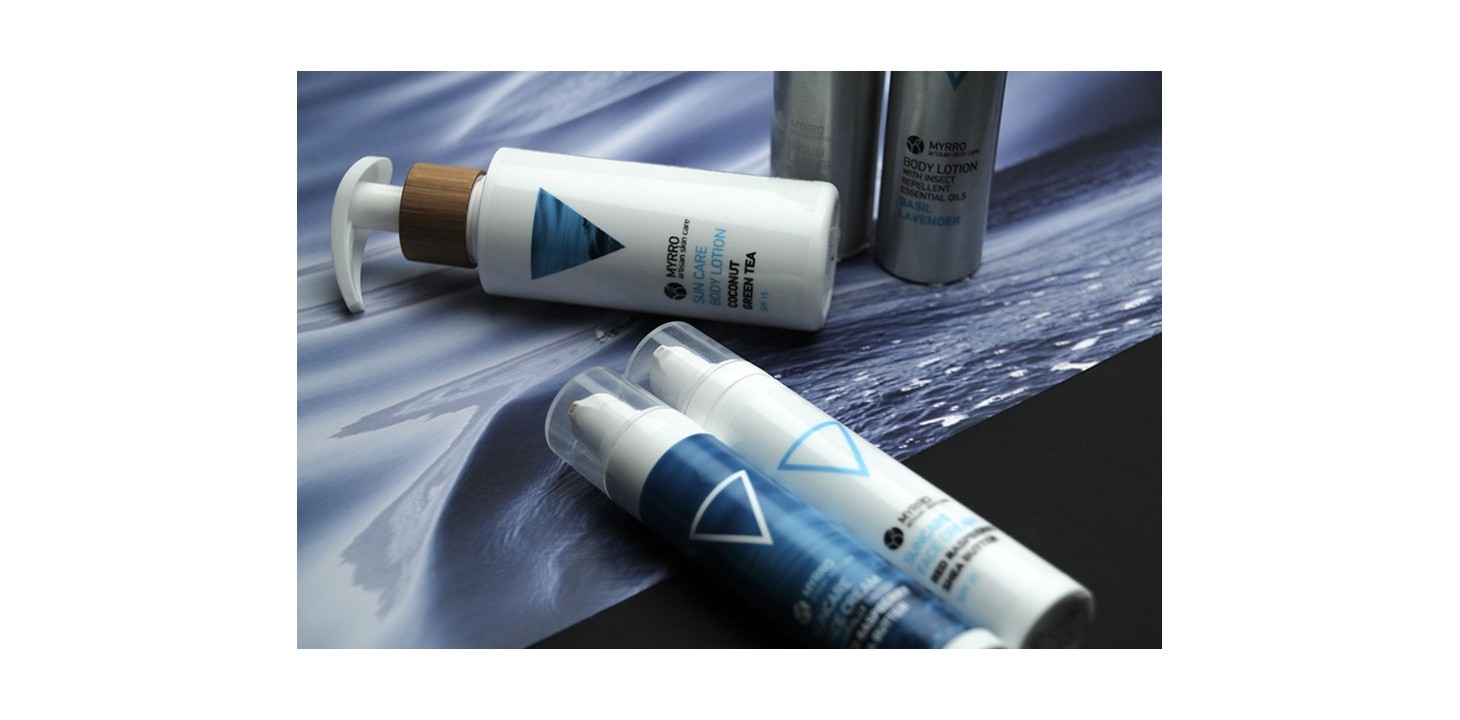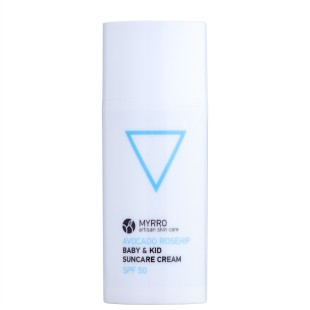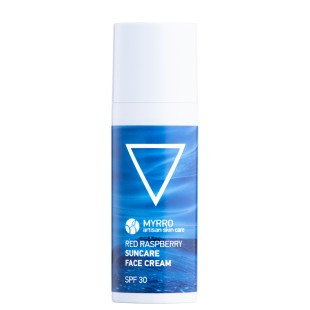
How well do we know the effect of the sun on our body and the benefits of the sunblock we use?
What does a sunblock protect us from?
From UVA & UVB solar radiation. From our UVC radiation protects ozone (for how much longer ...).
UVA (320–400 nm) radiation is responsible for premature aging of the epidermis.
UVB (290–320 nm) radiation is what it can cause inflammation in our skin and then burn (redness, stinging, peeling).
A sunblock should provide protection for a wide range of sun radiation so that it is effective, so it is always good look for the label to read "broad spectrum protection “.
What does the SPF protection index show us?
If our skin usually starts to burn 30 'after sun exposure radiation, applying a sunscreen with SPF 15 protection then our skin is protected for 15 * 30 = 450 'minutes, eg for 7.5 hours.
However, numbers are ... numbers. In practice to have protection that a product promises needs adequate, regular and uniform apply sunsblock and definitely always after sweat or
wipe so that we can be sure that it provides us with the sunscreen protection listed. If we apply an insufficient amount of one sunsblock, then the protection it provides us is reduced by 30-50%.
And of course, we avoid exposure at noon when the rays of the sun fall vertically.
And which sunsblock should I choose?
An SPF-15 index is definitely a good start as it blocks 93% of UVB radiation. For more sensitive skin & when exposed to Sun is more extensive at times when the sun is stronger you can
use a sunsblock with an index of 30 that blocks 96% of UVB radiation.
Larger indicators have very little difference in terms of protection and is usually a marketing issue.
For us, the ideal is the frequent and correct use of a sunscreen medium protection as mentioned earlier.
Natural filters
Natural filters reduce the amount of ultraviolet radiation that reaches our skin reflecting it. That’s why they are called sunblock and not sunscreen (sunscreen converts sun radiation into heat as explained later). Their action begins with where spread on the skin and are quite firm.
The most widely used are zinc oxide (ZnO) and titanium dioxide (TiO2), which are inorganic and safe in use.
Zinc oxide provides not only sun protection but It also has anti-inflammatory properties. It is not absorbed by the skin nor does it block its pores, it just settles on its surface and
Its molecules act like tiny mirrors that reflect it radiation. It is suitable for both sensitive and baby skin.
It is extremely stable and even after hours of exposure it continues to does his job. The only negative it has is aesthetic nature, why leaves white color in its application.
So here comes the titanium dioxide whose molecules help are smaller and do not create such a strong white film on the skin.
However smaller molecules tend to be more unstable for this some inorganic stabilizers are used (such as Stearic Acid, Alumnium Hydroxide, Alumina - which have nothing to do with the controversial Aluminum chlorohydrate) which in essence embrace the small molecules of TiO2 making the most stable.
But what are nano-particles and why are they good to avoid?
They are molecules of titanium dioxide & zinc oxide which are fragmented into very small molecules (<100nm) to avoid creating the aesthetically undesirable white film after application spread evenly. Many researches show that it is possible carcinogens as such small molecules can penetrate a lot while some argue that this has not been fully proven.
Some argue that this only happens if one inhales them for It is recommended to avoid sunscreen in spray form contain nanoparticles and their use should be avoided in pool (whether spray or not) because they are further decomposed by chlorine.
Chemical filters
Chemical filters reduce the amount of ultraviolet radiation turning it into heat. That’s why they are called sunscreen and not sunblock (they don’t block sun radiation). To act they need to spread before sun exposure, while their ability to absorb the UV radiation can vary considerably.
The good thing is that they spread evenly, they can create a very high SPF sunscreen and do not leave white film on our skin.
On the downside is that they can cause skin lesions (provided they convert all the UV radiation they absorb into heat and diffuse it into our skin) while intervening important in our biochemical pathways (hormonal disruptors) and can cause carcinogenesis.
Some of these are:
octyl-methoxycinnamate (which intervenes) in the secretion of thyroid hormones, the
homosalate (blocks UVB radiation but also interferes with hormone synthesis), oxybenzone or 4-methylbenzylidene camphor which also interfere with hormone synthesis and are used
even though they have been banned in too many countries.
Quantities of them have unfortunately been detected in breast milk in quantities
not allowed, which should make us even more skeptical in choice of our sunscreen.
Finally, we must not overlook the damage that chemical filters do to marine life and the oceans.
And what about vegetable oils that have sun protection?
There are vegetable oils that have their own SPF with king oil from Red raspberry seeds that have a very high index, are rich in alpha & gamma-tocopherols (vitamin E), vitamin A, omega 3- 6- fats acids. The reason that despite the pointers cannot be used as a sunsblock by itself is due to the fact that it is quite unstable and needed to be incorporated into some more stable formula to perform.
- Red raspberry seed oil (raspberry) SPF 25-35
- Carrot Seed Essential Oil - SPF 15-20
- Shea butter & coconut - SPF 5-10
- Sesame oil, grape oil, avocado & jojoba oil - SPF 3 -10
The forgotten benefits of the solar radiation is that it activates production (conversion for accuracy) of vitamin D in our body. Essential vitamin for the general state of our health - protects against inflammation, reduces blood pressure, helps our musclular system function better, improves brain function, improves mood by increasing serotonin levels and our vitality.
Eventually we should be more afraid of the sunscreens that do we use despite the sunlight itself?
The truth is somewhere in the middle. On the one hand we have to be a lot careful in choosing our sunblock on the other hand to enjoy the benefits of the sun with exposure at the right time and duration in each season.
Our opinion
In sunscreens with chemical filters we would say a big "NO" unless force you to be on a beach at noon in the summer and you do not have access to any other protection.
This is how we think about nano-molecule sunscreens, especially when they are in spray form.
In sunscreens with a high index (50 and above) we would also say no because they just do not make much difference and it is more a matter of marketing.
What about babies?
Little babies should not be anyway directly exposed to sunlight, so again such a high
SPF is of no use anywhere.
To conclude, we are in favor of a medium protection sunblock (SPF15) when it is used correctly in terms of quantity, frequency and application. For areas of the body that may be more exposed (face) and for toddlers, children or adults with a very sensitive skin a high protection sunscreen (SPF30) is ideal.
What have we chosen for us and our products?
Our sunblock range contains natural zinc oxide filters and titanium dioxide not in nanoform but in medium size (> 100nm) so that on the one hand we avoid the harmful effects of nanoparticles but at the same time they provide uniform protection and not to whiten the skin.
Their action is enhanced by vegetable oils (organic, cold-pressed red raspberry, carrot, avocado, etc.).
We have also used antioxidant herbal extracts instead of water (everlasting, green tea, chamomile, calendula) that they have in addition anti-inflammatory & emollient properties.
Finally, we have added juice from freshly cut aloe leaves, panthenol, natural vitamin E and essential oils of chamomile, lavender or mastic that moisturize & soothe the skin and work
extremely against sunburn.





